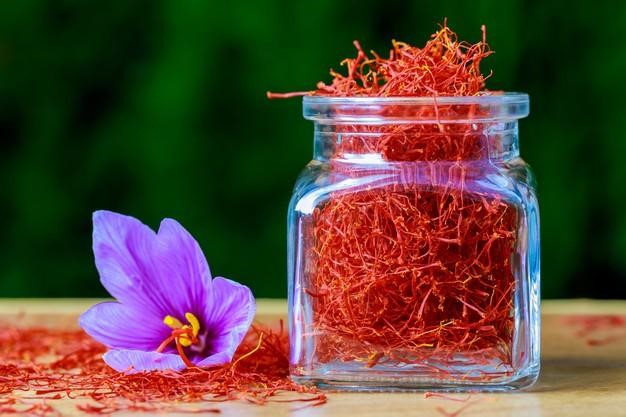
Introduction
Saffron is a spice made from the flower of crocus sativus, sometimes known as the “Saffron crocus.” Threads made from the vibrant crimson stigma and style are collected and dried for use as a spice and colouring factors in meals. Saffron has long been the most expensive spice in the world when measured by weight.
The phytochemicals picrocrocin and safranal give saffron its taste and iodoform- like or hay-like scent. It also includes crocin, a carotenoid pigment that gives meals and textiles a bright golden-yellow tint.
Saffron is a Southern European native that is grown in Mediterranean nations such as Spain, Austria, France, Greece, England, Turkey and Iran. Saffron India origin is a research topic in many laboratories across the world. . The spice has different names like Kashmiri kesar, Jafran Gujarati etc. Indian Saffronhas been in a large demand even in foreign countries.
How Saffron is grown from Crocus Sativus Bulbs

In your own garden, you can grow one of the world’s most expensive spices. By following the steps given below how saffron is grown you can cultivate your own supply, a pricey spice used in a variety of delectable dishes:-
- How Saffron is grown– Locate an area with good drainage. Scout out another location if there are still water puddles 5-6 hours after a heavy storm. Alternatively, enrich the soil with organic material to elevate the level 2-3” to promote drainage. Peat moss, compost, powdered bark, and decompose manure are all effective and generally available options. In waterlogged soils, Saffron Crocuses will not grow.
- Place your bulbs where they will get full sun or only a little shade during the day. In the spring, saffron crocuses prefer typical moisture levels, but in the summer, when they are dormant, they prefer dry conditions. Crocuses can be planted beneath the eaves for summer dryness and provide extra moisture in the spring if your region has wet summers.
- Plant the crocuses 3-4” deep and 2-3” apart in holes dug by hand or using the tool. Plant the bulbs with the tips facing upwards because they are small and rounded with a modest pointed top.
- Water crocuses thoroughly after planting, gently saturating the soil and settling it around the bulbs. In the autumn, roots will begin to form. In warm climates, some greenery may appear in the fall.
- Trim the beautiful stamens for cooking and drying later while they’re in bloom. The plants will not be harmed.
- Leave the leaf in site after the season’s blooming has ended; don’t chop it off. The leaves will collect sunshine, produce food through photosynthesis, and help the bulbs to grow stronger in the future. During vigorous development times, water as needed; around 1” of moisture every week is a decent estimate.
- The foliage may be removed if the leaves turn yellow and die back in the season. Before starting the next growing cycle, your bulbs will rest for a few months. The foliage in the warmest places may remain green until mid-spring, when it will turn yellow and die back. Withhold water when the leaves are gone and the bulbs are dormant.
This is how Saffron is grown in your own garden. Including saffron in your diet may help you in many ways as it has been beneficial for humans. It can be used as a flavored spice or as a colouring agent, aids with weight loss and improves the appearance of the skin, etc.




